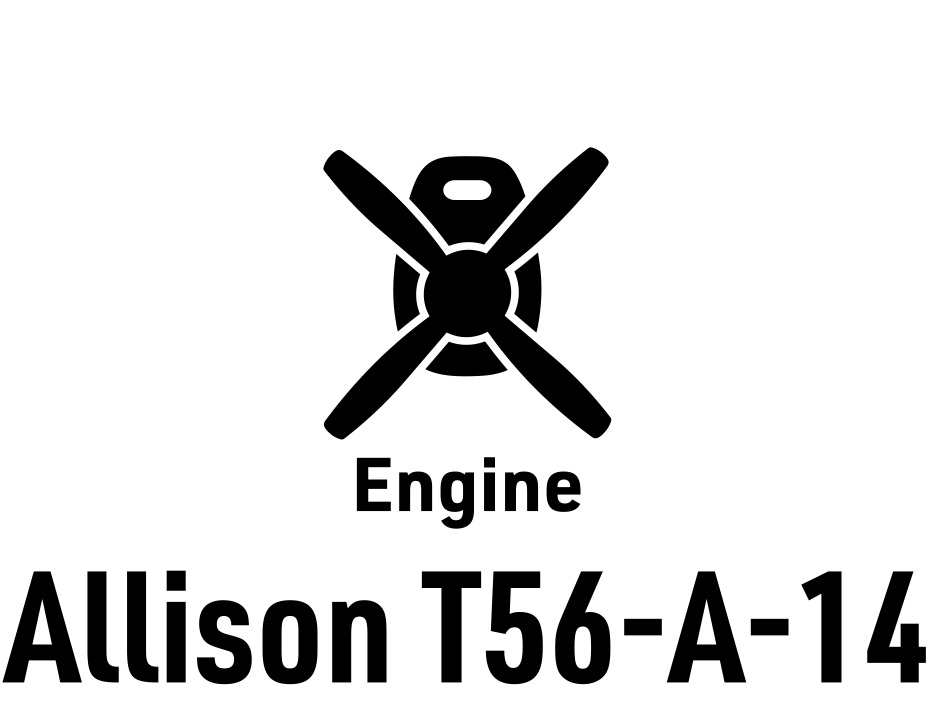This exhibition has been archived
The birth of the Lockheed Orion
The origins of the Lockheed Orion date back to 1957 when the United States Navy identified the need for a replacement for their Lockheed Neptune and Martin Marlin maritime patrol aircraft.
A more advanced aircraft was required that was capable of both maritime patrol and anti-submarine warfare. At the time, Lockheed had the Electra airliner in the early stages of flight testing, and they put forward a proposal to develop a military version of this aircraft. An initial research and development contract was awarded by the United States Navy in April 1958 and the first prototype flew in August the same year. The first operational aircraft entered service in April 1961.
Since then, the Orion has gone on to operate with 20 military services world-wide, including the Royal New Zealand Air Force (RNZAF).
One of the world’s most successful military aircraft started life as an airliner.
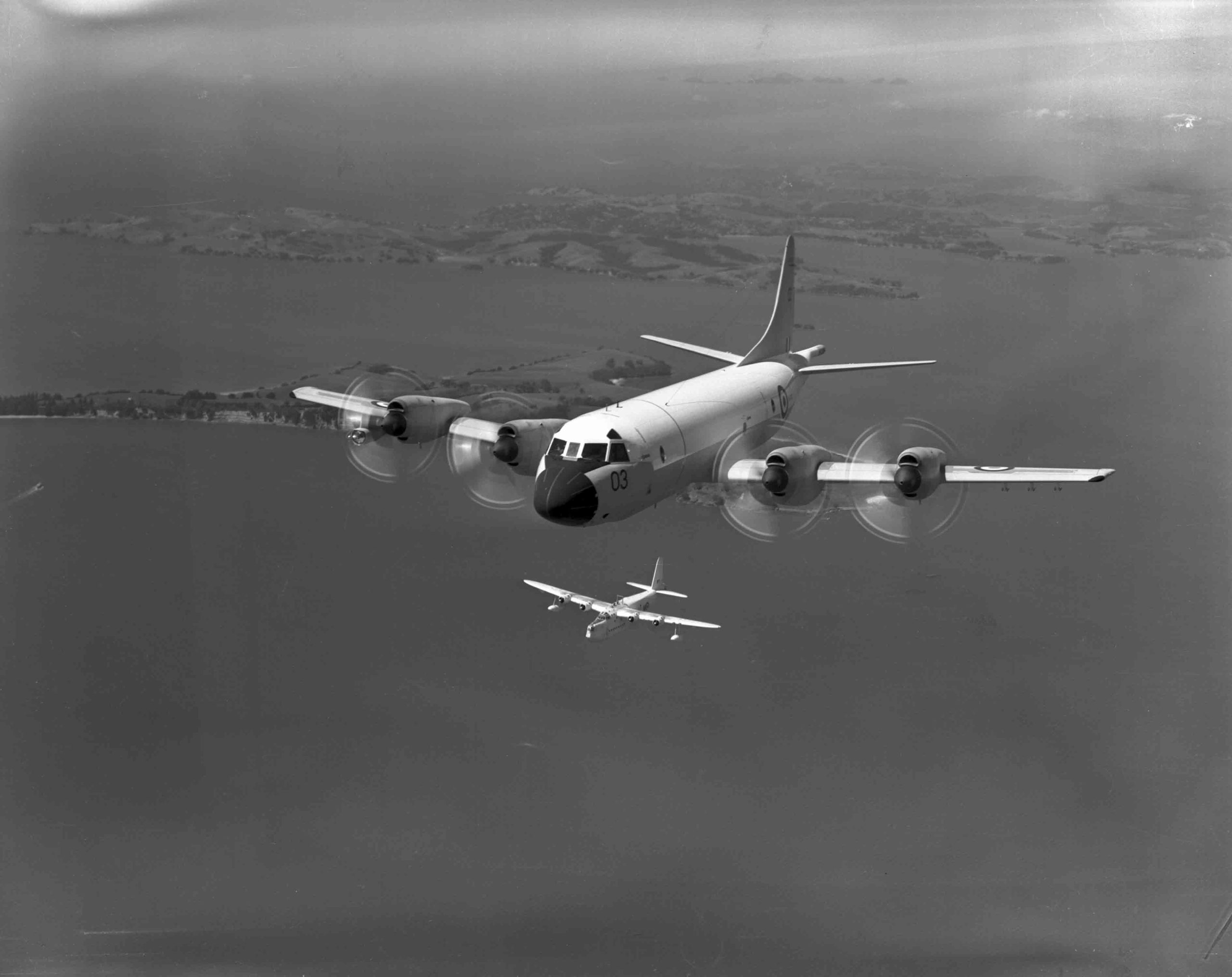
RNZAF Orion, NZ4203 in formation with an RNZAF Short Sunderland – the aircraft the Orion replaced in the maritime patrol role – sometime in 1967. WhG393-67
New Zealand and the Lockheed Orion
The New Zealand Government ordered five new Orion aircraft in March 1964 as part of a plan to modernise the RNZAF. At a total cost of £8 million, these aircraft represented a considerable increase in capability over the World War Two era Short Sunderland flying boats that they were replacing.
Deliveries took place between September and December 1966. These aircraft had their anti-submarine warfare capability upgraded in 1968 and this equipment was regularly updated to keep pace with technology. An additional airframe was purchased from Australia in 1985. Two more major upgrades took place to update the capability and extend the life of the RNZAF’s Orion fleet. These were an upgrade of the avionics and radio systems (Project Rigel) in the mid-1980s, and a re-winging of all six aircraft (Project Kestrel) in the late-1990s.
By the time these aircraft were retired in 2023, they had provided fifty-seven years of uninterrupted service to New Zealand.
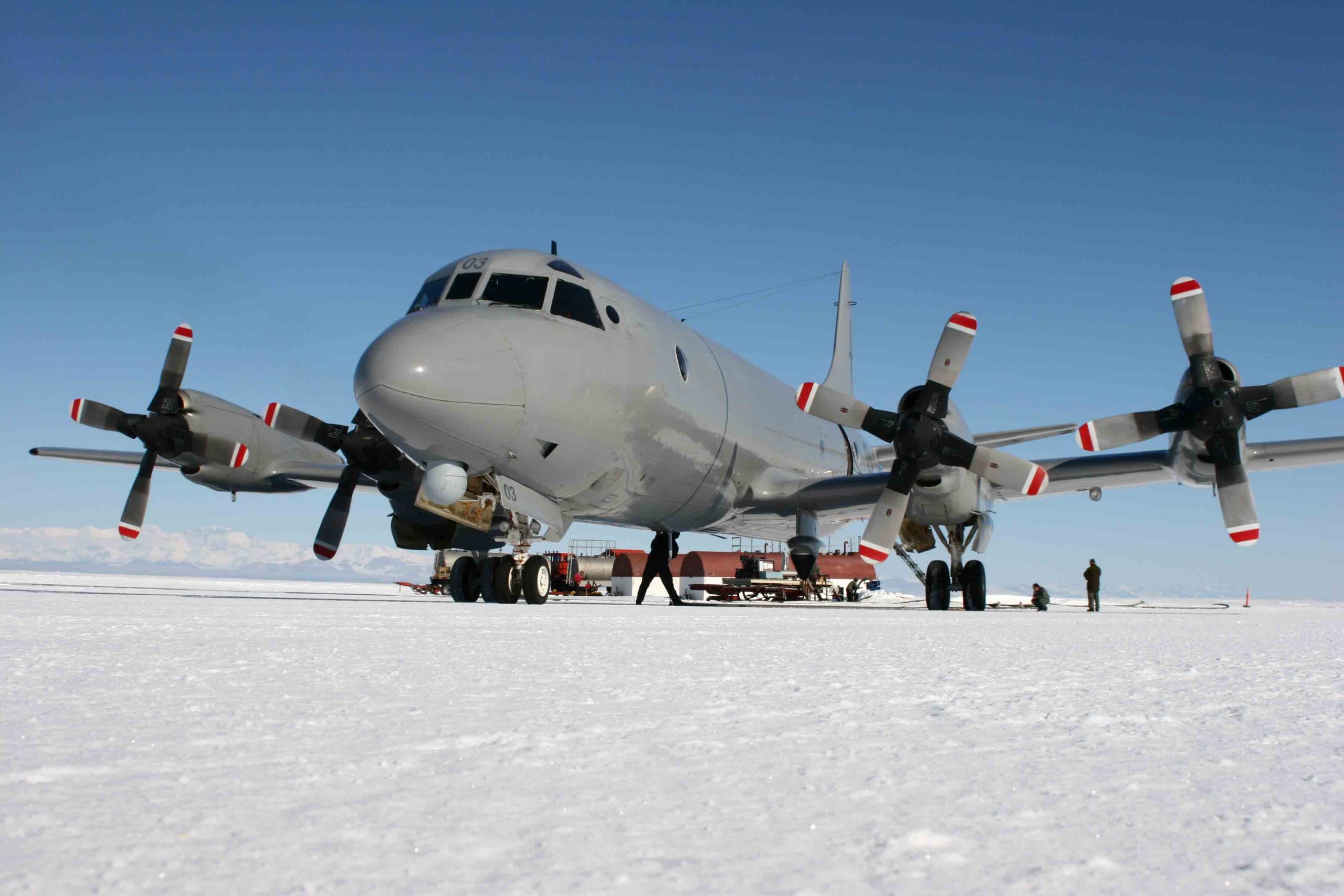
NZ4203 on the ice in Antarctica - the first successful landing of an RNZAF Orion there in 2006. NZDF Public Affairs
NZ4203
Built by Lockheed in Burbank California in 1966, NZ4203 entered service with the RNZAF in April 1967. By the time this aircraft was retired from service in 2021, it had completed 27,000 hours of flying while carrying out patrols of New Zealand’s EEZ (Exclusive Economic Zone), taking part in military exercises and operational deployments around the world, and saving many lives while on search and rescue duties.
It was also the first of the RNZAF Orions to land in Antarctica.
NZ4203 will be preserved at the Air Force Museum of New Zealand as the only surviving RNZAF example of the type.
Stats & Specs

This sequence shows the rescue of the crew from the Silver Shadow by the sailors of HMNZS Monowai during the Queen’s Birthday Weekend storm of 1994. Murray O’Neil personal collection.
Orions to the Rescue
The RNZAF’s Orions were called upon for a whole range of duties – from hunting submarines and illegal fishing trawlers to searching for UFOs – but no mission captured more headlines than the Queen’s Birthday Weekend storm rescue of June 1994.
That weekend the Orions of No. 5 Squadron were called out on what was to become the RNZAF’s largest ever search and rescue mission, and NZ4203 was at the forefront of this difficult work.
In late May a fleet of yachts had set sail from Auckland in a race to Tonga. By June 4 the fleet was well on its way when an approaching low deepened into a weather ‘bomb’.
The storm wrought havoc on the fleet with winds in excess of 185kph and 15m-high waves.
No.5 Squadron scrambled to help after a flurry of emergency beacons were activated and a massive search and rescue operation began. In the end seven yachts were abandoned and 20 sailors were rescued.
One yacht, Quartermaster, and its crew of three disappeared without trace. The Orions of No. 5 squadron flew a total of eight sorties totalling 108.5 flying hours in atrocious conditions, driven by their desire to do their best to find survivors and direct HMNZS Monowai to the rescue. They flew extended missions of up to 15 hours, and the flying conditions were the worst many had ever endured.
NZ4203 pilot Bruce Craies was awarded the Air Force Cross for the airmanship and leadership skills he demonstrated during the rescue.
He and his crew flew 41 hours over a 71-hour period to find and keep watch over the stricken yachts. His citation read: “There is no doubt that the exceptional effort by Flight Lieutenant Craies and his crew led directly to the saving of many lives.
Model of Orion NZ4205
In approximately 1/8th scale, this wooden model was built in the carpenter’s shop at Hobsonville, RNZAF Base Auckland in 1968. It was painted in the Orion’s original white and grey colour scheme and given the serial number 06 – the fleet at the time comprised of NZ4201-NZ4205, so naturally the model was assigned the next number in the series.
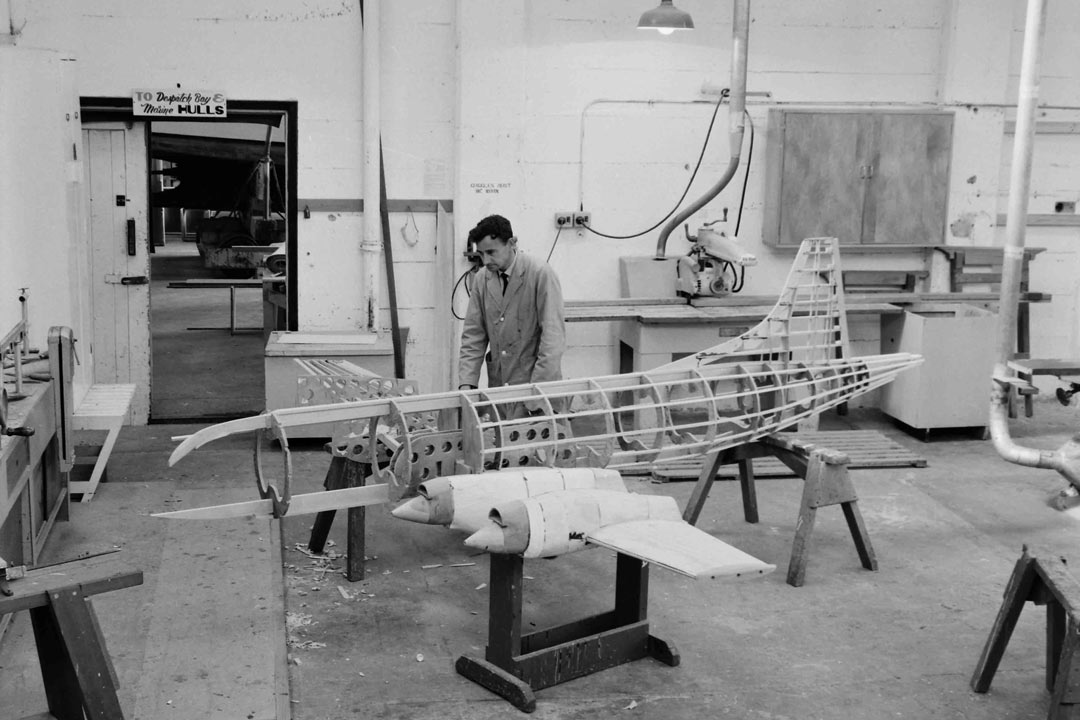

Images 1 & 2: Orion model being built in the woodwork shop at Hobsonville, 26 September 1968.
WhG4086-68 and WhG4088-68, RNZAF Official
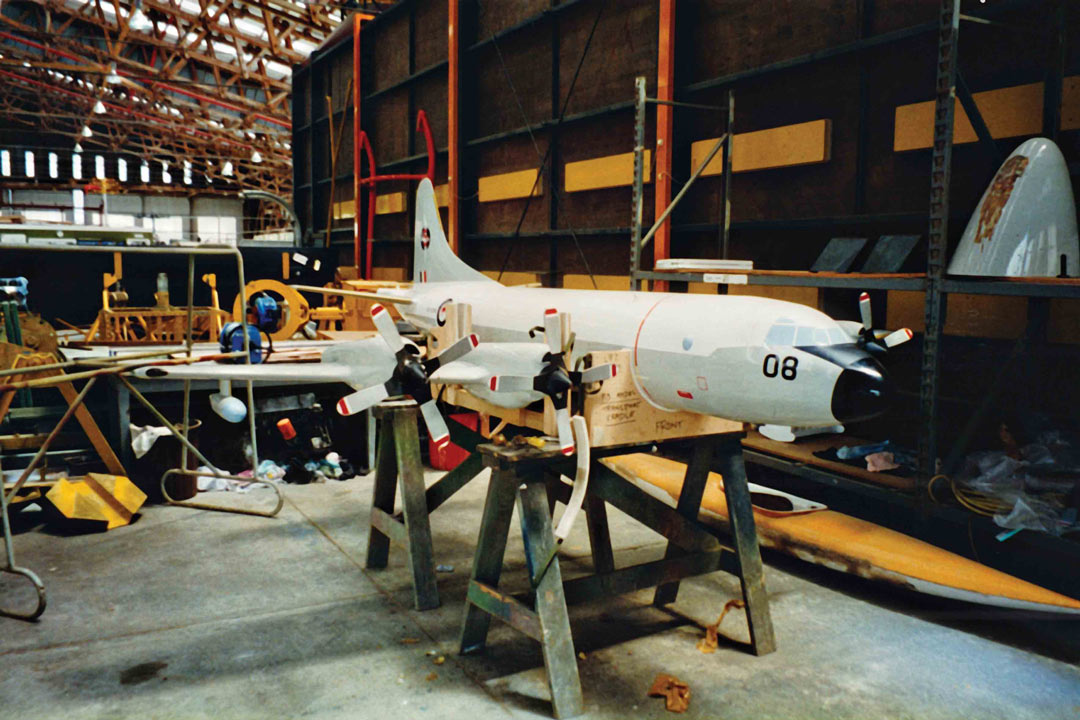
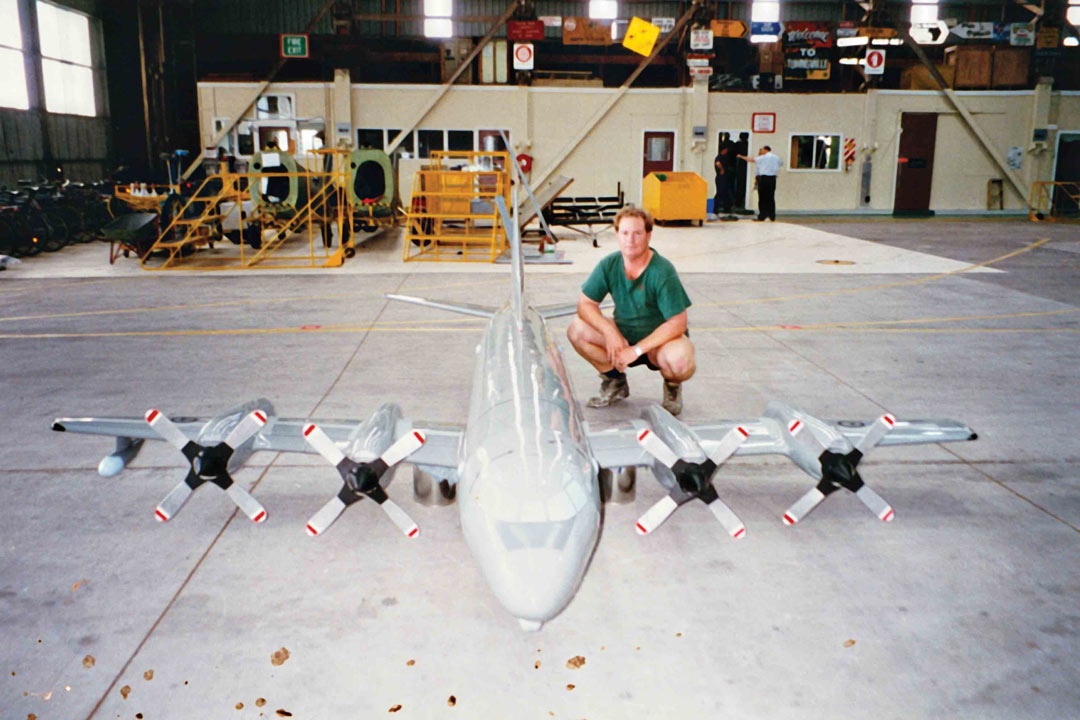
Images 3 & 4: Orion model before and after receiving the new ‘low visibility’ grey paint scheme at the RNZAF Auckland paint shop, mid-1990s.
Photographs kindly provided by Les Stockley
The model originally came to the museum as a loan from No. 1 Technical Training School at Hobsonville, before becoming a permanent part of the Air Force Museum collection.
In the mid-1990s it was given a new colour scheme to reflect the Orion fleet’s change to the grey ‘low visibility’ scheme. The first Orion to receive the new scheme was NZ4205 and the model was repainted to match, by Leading Aircraftman Les Stockley at RNZAF Auckland. When the model came to Les, it had the serial number 08. By that time, the serial NZ4206 had been allocated to the ex-RAAF Orion that was purchased in 1985 and 07 was given to the No. 5 Squadron Orion cockpit trainer.
Reputedly the model featured at a variety of events around the country. One known display was at Haywrights Limited (predecessor to Farmers Department Store) in Christchurch in 1970, to mark the fiftieth anniversary of the first Cook Strait crossing by air.
This model was built two years after a Hercules model of the same scale was made for display at the Air Show for the opening of Auckland International Airport. It seems likely that some of the same carpenters made both models; the names Corporal Davis, Corporal Symonds, Leading Aircraftman Dick Graham, Leading Aircraftman McMorran, Leading Aircraftman Parsons and Leading Aircraftman Les Jowers are inside the Hercules.
What’s Next for Orion NZ4203?
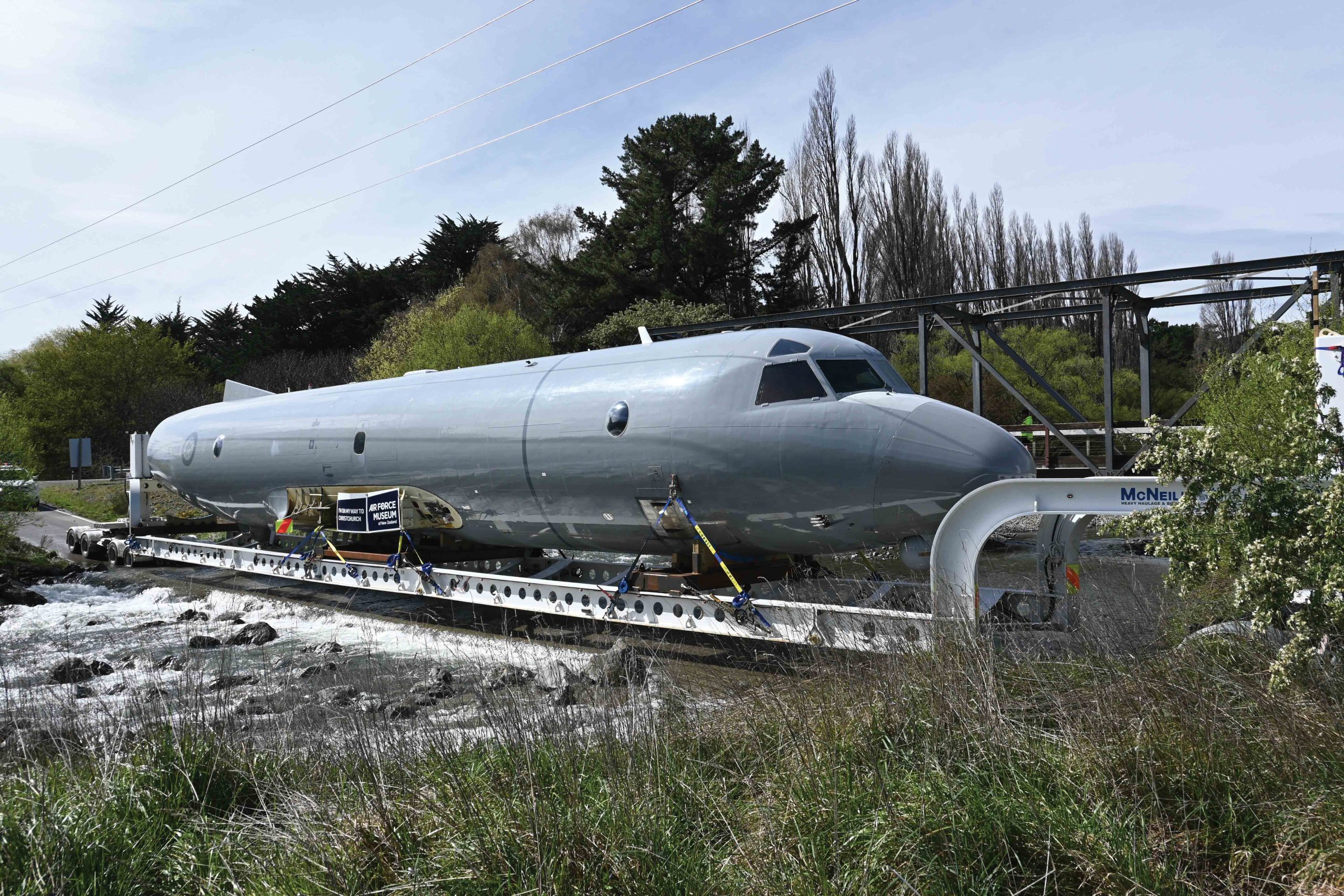
NZ4203’s fuselage being transported over the Wye River enroute to the museum in September 2023.
Our Lockheed Orion has had long-term preservation work completed so it can be safely stored while we work on plans for a new permanent exhibition space large enough to house it.
With a tail height of 10.3m and a wingspan of 30.4m, the Orion is too large for our current exhibition halls. It is also too large for its current hangar, which is why it has been stored with its empennage (tail section) and its submarine hunting magnetic anomaly detector (MAD) boom removed.
Sensitive military equipment, fuel and fluids have all been removed and our aim is to have it on permanent public display as soon as we can.

How can I help?
The Air Force Museum’s collection is owned and cared for by a notfor-profit trust, and we can’t build our extraordinary aircraft the home it deserves without your help.
Our problem is even bigger than just the Orion – the aircraft will soon be joined by a Lockheed Hercules C-130H – which is even taller and larger to store. Our vision is to develop a new purposebuilt space large enough for both aircraft.
We’re calling it the #extraordinaryaircraft campaign – and we’d appreciate you supporting us in any way you can!

A close-up of the Orion’s distinctive ‘paddle’ shaped propeller blades.
You can help by:
- Donating to us – see the Donate button below
- Supporting us by buying any of our merchandise – the profits will help towards the building fund
- Telling your friends about the aircraft and urging them to get along and visit our special Orion exhibition
- Lobbying your local councillors and MPs on NZ4203’s behalf
- Telling us about corporate partners who you think may be able to help
- Signing up to receive our electronic newsletters
- Following us on Facebook and Instagram for the latest news – #extraordinaryaircraft
More to explore





